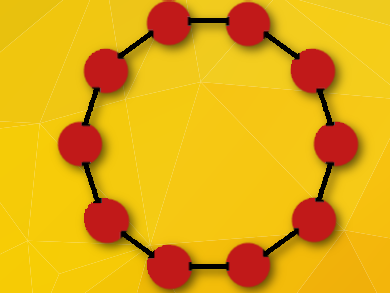Quasicrystals show an ordered but not periodic structure. They show symmetries that are “forbidden” in traditional crystals such as five-, 10- or 12-fold symmetries. The first quasicrystalline materials discovered were metal alloys, usually aluminum with one or more other metals. Single-component quasicrystal lattices have been predicted by computer simulations but had not been reproduced experimentally.
Ou Chen, Brown University, Providence, RI, USA, and colleagues have developed the first quasicrystalline superlattice that self-assembles from a single type of nanoparticle building blocks. The team assembled anisotropic, tetrahedral quantum dots on top of a liquid surface, which gives the particles more degrees of freedom when assembling themselves.
Using transmission electron microscopy (TEM) and tomography measurements, the researchers showed the particles assembled into discrete decagons, which stitched themselves together to form a quasicrystal lattice with 10-fold rotational symmetry. That 10-fold symmetry is forbidden in regular crystals.
While decagons are the primary units of the structure, other units are needed to fill the resulting gaps between the decagons. The researchers found that the decagons have flexible edges and could morph into polygons with nine, eight, seven, six or five sides—whatever was required to fill the spaces. This observation has lead to a new rule for forming quasicrystals, the “flexible polygon tiling rule.
- Single-component quasicrystalline nanocrystal superlattices through flexible polygon tiling rule,
Yasutaka Nagaoka, Hua Zhu, Dennis Eggert, Ou Chen,
Science 2018.
https://doi.org/10.1126/science.aav0790
Also of Interest
- Interview: Dan Shechtman: Succeeding in Science,
Vera Koester, Christian Remenyi,
ChemViews Mag. 2013.
https://doi.org/10.1002/chemv.201300112
Nobel Laureate Dan Shechtman talks about the reason why quasicrystals weren’t discovered earlier and his unerring belief in his experiments



